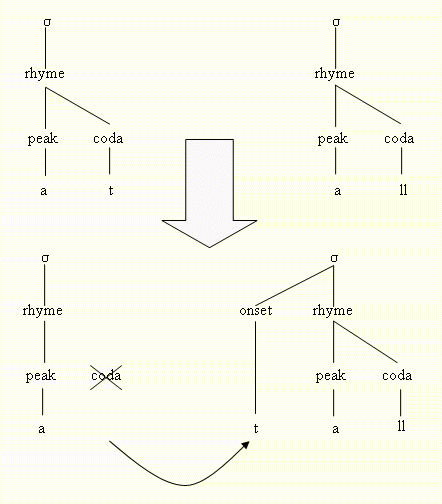


Linking plays a very important role in connected speech in English, although its use is receding a little with the increasing use of glottal stops in younger generations. It mainly takes place when there is either a consonant at the end of a word/morpheme and a vowel at the beginning of the next, or when a word/morpheme that ends in a vowel and one that begins with one come together. The first type is what is also known as liaison and effectively represents a kind of resyllabi(fi)cation, where the final (coda) consonant of the first word becomes the onset of the first syllable of the next word. An example for this can be seen in the illustration below, which demonstrates the resyllabification of at all.

Other examples of this would be look up [lʊ.kʌp], look out [lʊ.kaʊt], keep up [kiː.pʌp], get up [gɛ.tʌp], get in [gɛ.tɪn], climb over [klaɪ.məʊ.və], nine o'clock [naɪ.nə.klɒk], at eight o'clock [ə.teɪ.tə.klɒk], etc., where . symbolises a syllable boundary.
In cases where two vowels ‘clash’ at the boundary between two words/morphemes, we essentially have two options. We can either give the second word a glottal onset, in which case we interrupt the flow of speech, or we can insert a linking element in the shape of a semi-vowel. When we do break the flow, this is also referred to as creating a hiatus, from the Latin word for gap. Conversely, if we link the two elements, we speak of avoiding the hiatus. When the vowel at the end of the word/morpheme is a (high) front vowel, the linking element is a /j/ – as in high up, high and low, my own, etc. – and for ‘more backish’ vowels (usually /u/ or /ʊ/) it is /w/ – as in do it, how old, however, blueish, bluer, shoeing, etc.
Words that have an <r> at the end in their spelling allow for a different type of linking. In rhotic accents, the <r> is pronounced anyway and may thus simply be used as it is in straightforward cases of liaison. In non-rhotic accents, the <r> may be realised as a linking element despite the fact that it would not occur if the word were spoken in isolation. Examples for this are far away, far and wide, fair/sure enough, for ever and ever, etc. In some cases, but only for non-rhotic accents, it is also possible that an <r> that does not occur in the spelling to be inserted as a linking element, in which case we speak of an intrusive r, such as in China and Japan, law and order, or drawing room being realised as [tʃaɪnəʳəndʒəpan], [loːʳənoːdə], and [dɹoːʳɪŋɹuːm] respectively.
Knowles, G. (1987). Patterns of Spoken English: an Introduction to English Phonetics. London: Longman.
Roach, P. (2009). English Phonetics and Phonology: a Practical Course (4th ed.). Cambridge: CUP.